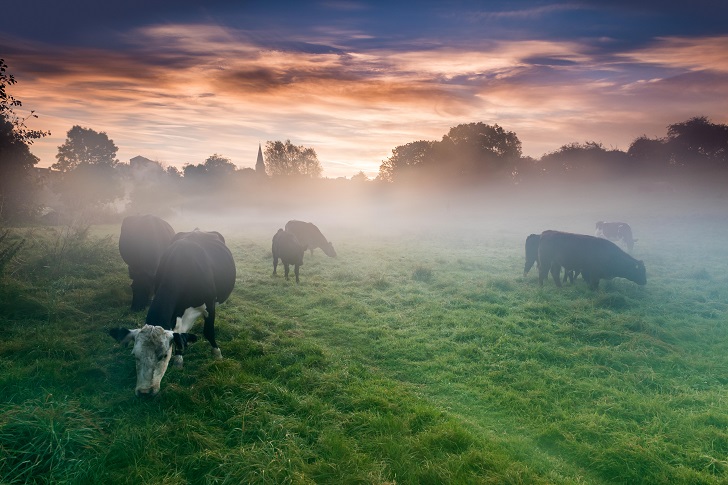Why autumn mist makes the countryside
In an extract from CPRE’s Icons of England book, our former chairman Sir Nigel Thompson explains why ‘a countryside without mist is like a play without drama; a poem without emotion.’
Edgar Allan Poe once said, ‘were I called on to define, very briefly, the term “art”, I should call it “the reproduction of what the senses perceive in nature through the veil of the mist”.’
I think he was right. As summer fades and the backdrop changes – swallows migrate from their telegraph wires and trees are drained of colour – it is the mist that clings to life and provides atmosphere. It is this shroud of liquid droplets suspended in the air that turns a rolling hillside scene into a work of art.
It is not so much the science of mist that fascinates me. It is the way it transforms a landscape as it descends. Mist is like a universal corrector in the way it veils the imperfections of the middle ground. It softens sharp edges and disguises the influence of man – it puts nature on show.
I remember visiting the Lake District one October and seeing the mist linger over Grasmere. The hills stood tall above this blanket of air and the water crept out from beneath. It was like watching an artist put the finishing touches to an oil painting right before my eyes.

My life is one that has been spent close to water – I used to live in a water mill in the Lambourn Valley and now enjoy the view of a chalk stream near my home in Wiltshire – and it would be hard for me to imagine a world without mist.
For twelve years I laboured over the vineyard on my land here in Stitchcombe, rising in the early autumn mornings to tend the vines and watch the grapes ripen. And it was on those mornings that I grew to love mist and all its mysteries.
There is something about morning mist that is particularly compelling. I love watching it flow like a stream in the air; I love being enveloped in it along with thousands of dew-covered spider webs, protected from the weak shafts of light trying hard to make an impression on the scene. And I love breaking through it like the spires and tall trees on the horizon, and seeing it rest like a blanket of cotton wool before me.

Whether it is clinging to the contours of a hill or patching up a scene with its artistic strokes, the transient beauty of mist is something that has inspired generations of artists. With its unpredictable nature and dramatic undulations it brings romance and personality to the landscape, turning words on a page into an evocative scene.
Keats’ autumn was a ‘season of mists and mellow fruitfulness’. For Wordsworth in ‘Resolution and Independence’, the mist took on a life of its own, chasing a hare in the glittering sun and running ‘with her all the way, wherever she doth run’. With mist, characters from literature are lost, hidden and enveloped – but always remembered.
A countryside without mist is a countryside without art. Far from the glare of city lights and tightly packed buildings, mist will continue to spend autumn days perfecting its rural masterpiece – before the evening blanket descends to rub it all away.
A version of this piece was previously published in Icons of England (2008), a collection of essays on our heritage and landscape edited by then CPRE president Bill Bryson.









